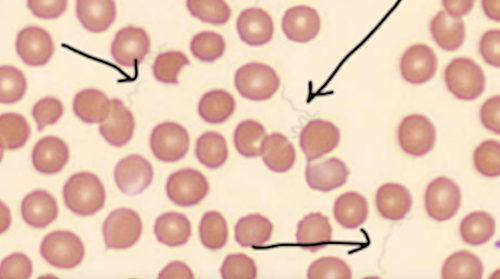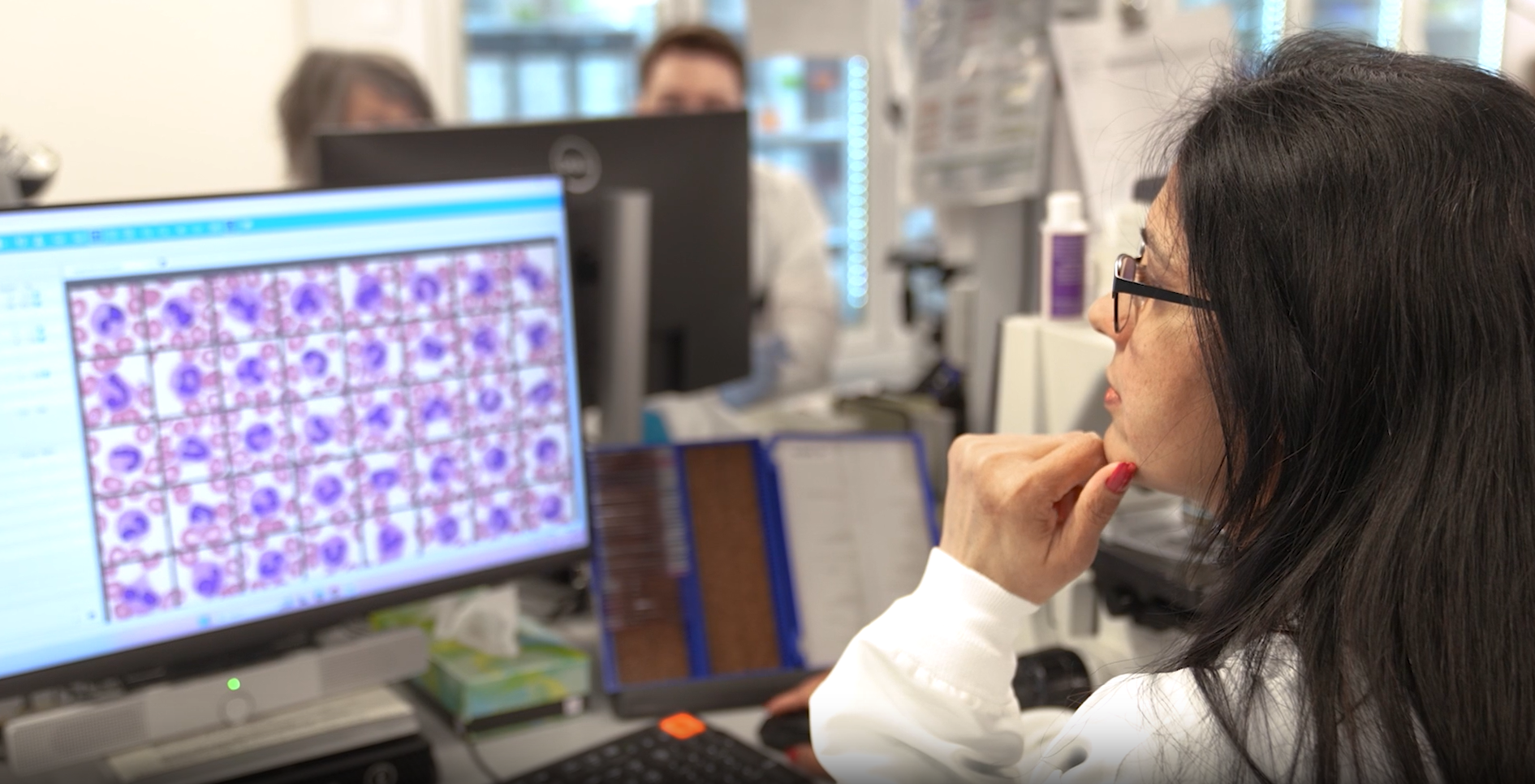Passing the baton: A team effort to identify a mysterious infection

“I couldn’t open my eyes I was in so much pain.”
That’s how Taylor Billion described her condition when she arrived at the Emergency Department at Nebraska Medical Center one day in March.
She was suffering from abdominal pain, vomiting, and nausea. Despite her experience as a medical student at Creighton University Medical School, she had no idea what was wrong.
Collaborative patient care

Emergency Medicine physician, Alex Tomesch, MD, originally thought Billion could have meningitis. However, her exam was not consistent with other meningitis cases he had seen in the past. Dr. Tomesch noted that she had recently traveled abroad-- opening the possibility of something more uncommon.
He ordered a blood draw and sent it to the laboratory for analysis.
That’s when one of our laboratory scientists went to work.
An unusual finding
The case was a collaborative effort from the start. The Core Lab team, including Zankhana Amin, MLS, pathologist Neha Gupta, MBBS, and resident Jacqueline Peck, MD, noted an unusual finding—a curved, spiral-shaped bacterium on Billion's blood sample. Recognizing its significance, they contacted the Microbiology Laboratory, which had been engaged with the Infectious Diseases (ID) team led by Rick Starlin, MD, and ID fellow Calvin Albrecht, MD.

The Microbiology team reviewed the blood sample under a microscope and confirmed the presence of bacteria. This discovery immediately narrowed the diagnosis but did not yet provide a definitive answer.
Looking for clues
The baton was passed to the Microbiology Laboratory. Initial tests, however, didn’t yield a definitive result. Clinical Microbiology Fellow Scott Stevenson, MD, took the next step: he took DNA from the sample and used PCR testing to copy it, to figure out which bacteria are present in the sample. Courtney Lanier, MLS, a technologist in the

Molecular Genetics Laboratory, then used a method called Sanger sequencing to generate important genetic information. The results were passed back to Microbiology, where Dr. Stevenson analyzed the sequence—and the answer finally emerged: Borrelia hermsii, the cause of soft-tick relapsing fever (STRF).
Solving the puzzle
STRF is transmitted through bites from soft-bodied ticks of the Ornithodoros genus and is commonly associated with travel to mountainous regions in the western United States. The patient’s travel history supported this diagnosis.
Importantly, the early detection of bacteria on the blood sample helped guide treatment, improving the patient’s outcome even before the final identification was made. The patient recovered fully and was sent home in good health, confirmed by Dr. Albrecht.
This case highlights the remarkable synergy between laboratory professionals and clinical teams, showcasing the power of academic medical centers to solve complex cases.
From the Core Lab to Microbiology to Molecular Genetics and Infectious Diseases, each department played a critical role in the diagnostic journey. This case is a testament to what we can accomplish when we work together, passing the baton seamlessly in the race to deliver answers and, ultimately, the best possible care for our patients.







